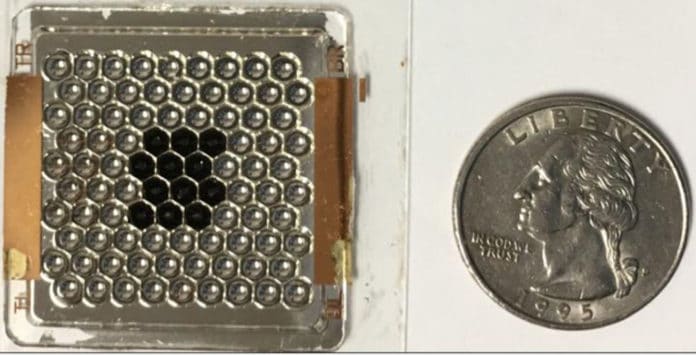Optical concentration can improve the efficiency and reduce the cost of photovoltaic power but has traditionally been excessively cumbersome, massive and unreliable for use in space. Now, scientists at the Ben-Gurion University of the Negev (BGU) have developed a new solar power generator prototype to provide unprecedented watt per kilogram of power critical to lowering costs for private space flight.
Together with U.S. colleagues, Prof. (Emer.) Jeffrey Gordon of the BGU Alexandre Yersin Department of Solar Energy and Environmental Physics, Jacob Blaustein Institutes for Desert Research, developed this first-generation prototype (1.7 mm wide) that is slightly thicker than a sheet of paper (.10 mm) and slightly larger than a U.S. quarter.
In outdoor testing, the system achieves a terrestrial power conversion efficiency of 25.8 ± 0.2% over a ±9.5° angular range, resulting in a specific power of approximately 111 W/kg.
Scientists noted, “These results lay the groundwork for future space microconcentrator photovoltaic systems and establish a realistic path to exceed 350 w/kg specific power at more than 33% power conversion efficiency by scaling down to even smaller microcells. These could serve as a drop-in replacement for existing space solar cells at a substantially lower cost.”
The research is published in Optics Express.
